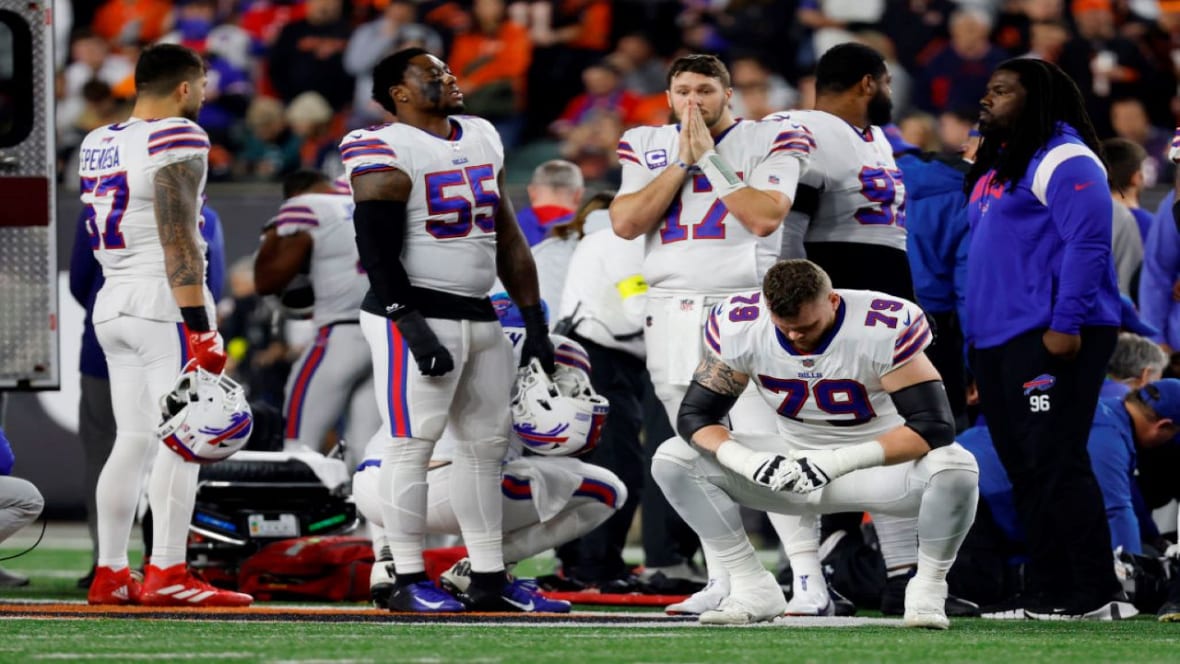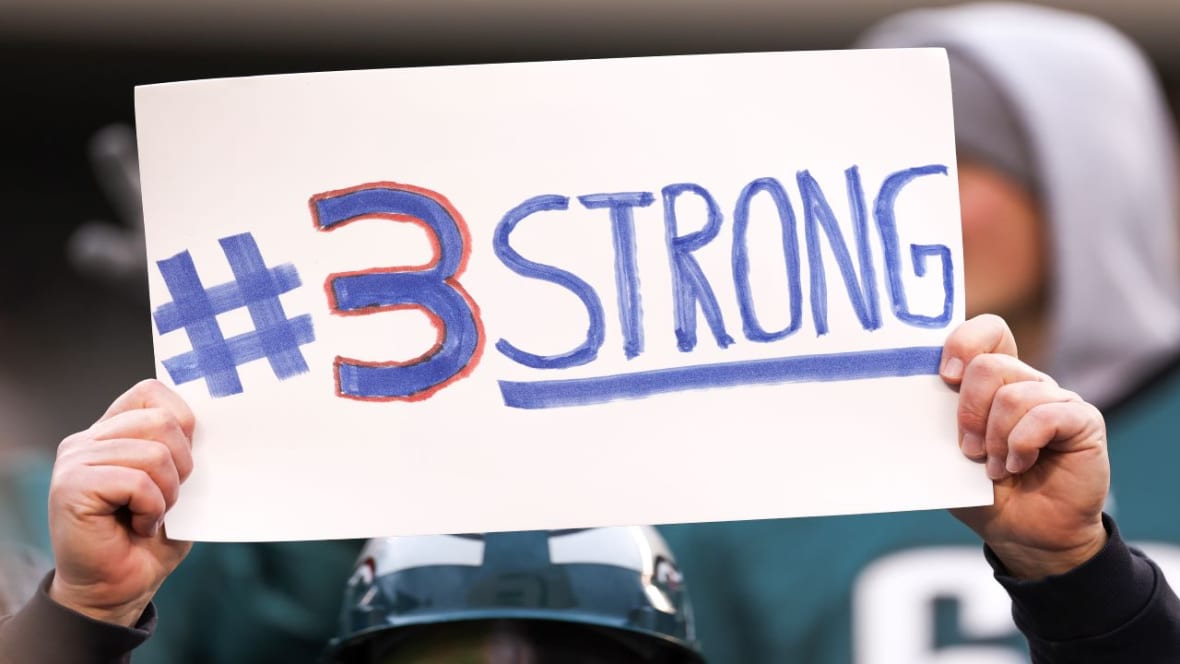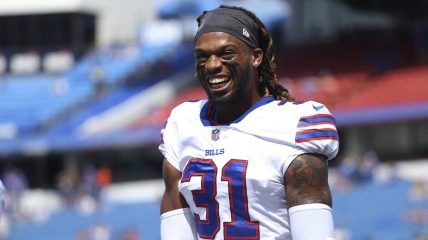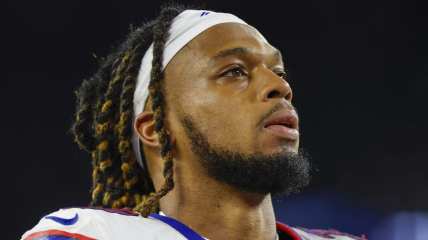Analysis: America loves Damar Hamlin. What about other Black men?
Hamlin's situation raises uncomfortable questions about race in America.
When Damar Hamlin collapsed to the turf, America collectively gasped.
Hamlin, playing for the Buffalo Bills against the Cincinnati Bengals, landed awkwardly after making a tackle, with his chest on an opposing player’s helmet. Hamlin got up, took two wobbly steps and collapsed.
His heart stopped.
Weeks later, recovering from arguably one the most shocking injuries in pro sports history, Hamlin continues to feel love and respect from a wide swathe of the country.
Since Hamlin’s injury on Jan. 2, donors have poured more than $9 million into his foundation, which had raised only about $3,000 before he was hurt, according to a cached GoFundMe page.
“Pray for Damar” and “Love for Damar” signs became a fixture at not only Bills games but in other NFL stadiums. The slogan on the back of Hamlin’s helmet — “Choose Love” — fit perfectly with the outpouring of support.

America’s rallying around Hamlin raises uncomfortable questions. Why can Americans support a Black man who nearly died for their entertainment but can’t support Black men who stand up for the causes they believe in? Why can they support a Black man on the field but have difficulty showing the same empathy for those off it?
“When Damar Hamlin goes down on that field for the entire nation to see, white America sees him as vulnerable in a way that we usually don’t grant Black men in our society,” Thomas Edge, an associate teaching professor in the Department of Ethnic Studies at Bowling Green State University, said.
“They don’t see him as a threat. They don’t see him as this strong professional athlete. In some ways, his injury renders him safe,” Edge said.
But Colin Kaepernick wasn’t a threat to anyone. Yet in 2016, while he was the San Francisco 49ers’ quarterback, he began kneeling during the national anthem to bring attention to racism and inequality. He was so ostracized that the man who had led his team to the Super Bowl hasn’t played in the NFL since.
George Floyd wasn’t a threat to anyone, especially not with a police officer’s knee pressed down on his neck until he died. Yet two years after his murder, the Black Lives Matter movement his death accelerated highlights the country’s racial divide. While 74% of Black Americans support the group and credit it with helping Black people, 51% of white Americans oppose BLM.
The different reactions — love for Hamlin, disdain for Kaepernick and others — stem from white America’s view of appropriate spaces and places and what is and isn’t acceptable behavior for Black people.
“In the entertainment and sports industries, Blacks and people of color can transcend race,” Ronnie A. Dunn, an associate professor at Cleveland State University and executive director of its Diversity Institute, told theGrio.
“If we look at Michael Jordan in basketball or Michael Jackson in entertainment, those are the areas where Black folks are allowed to exceed racial boundaries,” he said.
Hearing and seeing people in those fields take a more vocal role on social issues can prove shocking.
“Kaepernick and other athletes simply used their position and visibility to [reach] an even wider audience. For that audience that had grown accustomed to seeing Black men for their entertainment, I think this was jarring for a lot of white America,” Edge said.
Highlighting disparities in police treatment, the continuance of systemic racism and inequality, among other difficult topics, “forces white America to confront things that they usually do not wish to confront,” Edge said.

(Photo by Tim Nwachukwu/Getty Images)
“And I would include George Floyd, Tamir Rice, and a host of other Black men whose cases did the same thing. They challenged white Americans’ ideas of how our justice system works, how our police function, about what rights we do or don’t have, and of course, challenged ideas about where we are with race in the 21st century.”
George Floyd’s horrific death seemed to, at least for a while, spark an increased interest in race in America. Harvard Kennedy School published a “Racial Justice, Racial Equity, and Anti-Racism” reading list. Books on race exploded in popularity. “Caste,” “How to Be an Antiracist” and “Just as I Am” made the New York Times 2021 Nonfiction Best Sellers list, among others.
“I think all of that shows that up to a certain point, America can look at the suffering of Black men and say this is unjust,” Edge said. “This should not be happening. I can empathize with him. But what do you do when asked to act? There are times when white America will permit itself a certain amount of room, some leeway, but they won’t go past a given point.”
All that interest in reading about racism didn’t result in meaningful change. The “given point” had been reached, and America began pushing back on the racial reckoning that exploded in the summer of 2020.
Policy discussions on policing resulted in a battle between Black Lives Matter and Back the Blue, each of which saw their cause as antithetical to the other. Efforts to raise awareness about systemic racism have been swept away by bans making it harder to discuss race in schools and the workplace. Opponents derided societal tools to help reduce income disparity as left-wing socialist giveaways that favored one group (Black people) over another.
Nearly 24 million people, the largest audience ever on ESPN, watched Hamlin fight for his life on the field. They heard the shocked announcers tell the audience his heart stopped and watched medical personnel perform CPR and use an automated external defibrillation device to keep him alive.
At that moment, with players and fans sobbing, we all saw Damar Hamlin as a man, not a Black man.
“You’re always heartened to see the humanity, but that’s not translated for the loss of Black lives and Black men and the broader society,” Cleveland State’s Dunn said. “That’s the perplexing question we’ve been wrestling with for 400-plus years in this country.”
TheGrio is FREE on your TV via Apple TV, Amazon Fire, Roku and Android TV. Also, please download theGrio mobile apps today!


